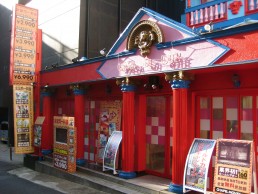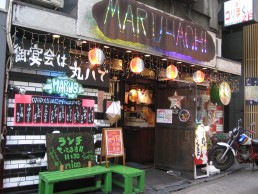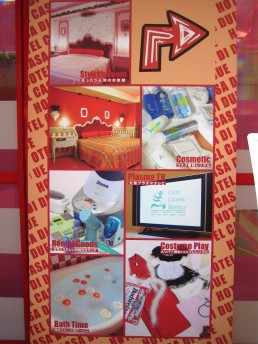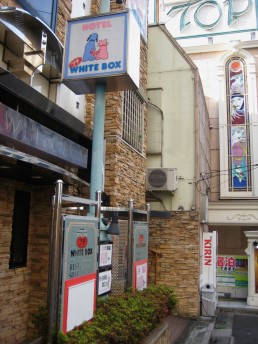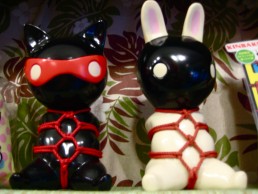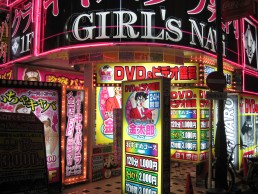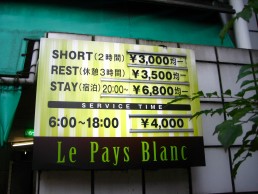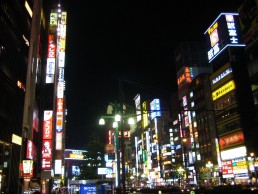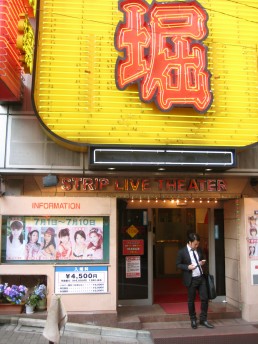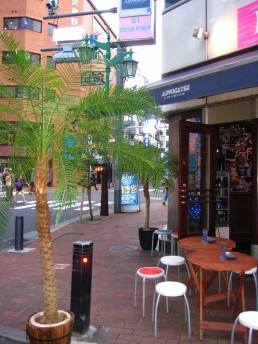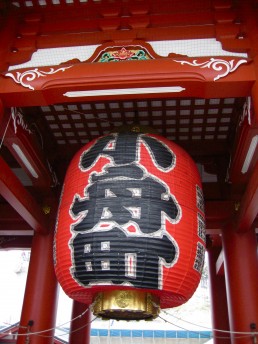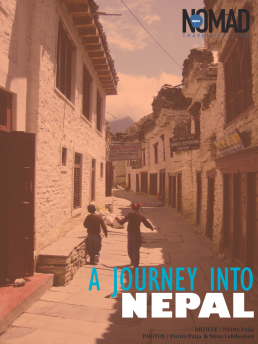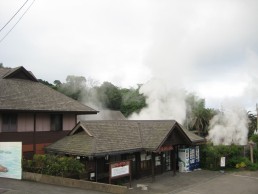Venturing in Shibuya, Kabukicho, Shinjuku, and other parts of Tokyo which are known for their subcultures less covered by the guidebooks, is an adventure in itself. It was an entirely different world from our own culture and immensely interesting.
Getting Lost in the Streets of Tokyo
I remember how our first days in Tokyo were spent mostly by taking a lot of pictures and just wandering around in awe. Getting lost while walking around a city is sometimes just fun, but Tokyo does have one big inconvenience, and that is the hardship of finding particular addresses.
Most of the streets have no names, and if they do, they don’t have any signs with the names written down – not even in Japanese. Even if the locals want to find some particular place they draw little maps for each other, for example in the napkins.
That isn’t quite traveler-friendly, so be prepared to get lost all the time! Like said before, sometimes getting lost doesn’t mind that much when there’s something to see almost all the time. But if you’d really want to find some particular place, there’s a good chance that you will not find it – which may sometimes be really frustrating.
Shibuya – Love Hotels, Strip Clubs, and Sex Shops
Shibuya is one of the most exciting neighborhoods of Tokyo. And I admit that maybe most of all we wanted to see the famous Love Hotel area (or the so-called “Love Hotel Hill”), which turned out to be a lot more shabby and scruffy than we had expected.
It sure didn’t seem, neither felt like you would start to want anything – the last thing in your mind being sex. We just had expected more from these famous Japanese Love Hotels, so we felt a bit disappointed. They also appeared to be pretty expensive, especially those which looked at least a little bit more “upper class”. In summary, you can’t find love hotels romantic in any way, no matter how hard you’d try.
There were also various kinds of striptease caves everywhere, and I mean literally everywhere. We caught many white-collar working men coming out from them in the afternoon. It came to my mind that while others go for an after work drink, it seemed that many Japanese men went for an after work striptease.
Out of curiosity we also visited some sex shops of the area, and there were lots of them. That was actually a lot of fun since there were plenty of “interesting” stuff sold. You know, let’s just say that Japan hasn’t got its reputation as one of the kinkiest nations for nothing. While you’re in Japan, getting to know something about the sex culture just is a must. And if you want something very particular, this is the place where you will find it. If you won’t, it probably doesn’t exist at all.
Recommended (Gay) Bars in Tokyo
Despite the hardness of navigating in Tokyo, we did find some places we had checked out beforehand. So here are some of our two top picks from that pack.
In Shinjuku Ni-chome there are lots of gay bars, and it’s the ”official” gay area of Tokyo. One nice bar, where we had quite a many beers (because it was Happy Hour) was called The Advocates. Browse their website to find the location. The Advocates is very tiny and as I can remember we were the only women present. But that wasn’t an inconvenience at all – on the contrary. While some gay bars don’t want women as customers, in here we felt warmly welcomed.
One other bar which we stopped at was a lot harder to find because it was on the 3rd floor of some ordinary looking apartment building, with only a tiny sign high in the wall of the building. That was a women’s bar called Kinswomyn. That bar, unfortunately, wasn’t really worth the search, and we preferred the Advocates more.
Sushi Bars and Izakayas for Quick Snacks in Tokyo
It was also surprisingly difficult to find some good places to eat in, even though Tokyo is full of restaurants. The majority of the restaurants are those almost dirt-cheap, local eateries called izakayas where you just can’t get any decent meat (most of the food being just bones and stuff).
Then there are those really expensive restaurants – even for us Finnish who are used to the fact that eating out may cost a small fortune. And we even didn’t travel with a tight budget. However,t we always found something nice to eat in the end, even though I don’t like fish. And in Japan fish is plentiful.
We also tried some traditional sushi for many times. The sushi sold in the restaurants was very different from what we are used to at home, it tasted much more “fishy”. I wasn’t particularly fascinated by it, but if you like to eat fish, you’ll love the sushi in Japan.
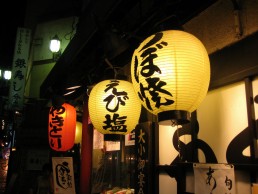
Kabukicho – Japan’s Largest Red Light District
Japan’s largest Red Light District called Kabukicho is also in Shinjuku. It’s just without the official prostitutes (yes, at least without the “official”) hanging around the corners. But it certainly is an interesting area full of bars and hostess clubs. It’s also a place where people come to party and go bar-hopping.
But bear in mind that Kabukicho is an expensive place to have a night out, at least if you find yourself venturing into the host and/or hostess clubs. Be prepared with lots of hard cash because a lot of the places won’t accept credit cards and if you can’t settle your bill you can get into trouble. Some – or perhaps quite many – of the clubs are still rumored to be run by the Yakuza, Japan’s notorious mafia. So, you wouldn’t want any trouble, would you? But despite this, it’s still a safe place to hang out and have a look of the raw vibe that Kabukicho has.
Kabukicho is also a fun place just to hang out, to walk criss-cross along the streets of this neon hell and occasionally stop by at some ordinary bars for a drink or two. That won’t break your budget, and you can have an excellent time.
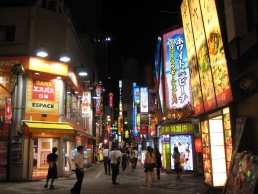
Tokyo’s Metro Offers an Easy Transportation
The best way to move around in Tokyo is the metro. It runs smoothly and if you just try to avoid the worst rush hours of the day it’s even fun to ride with.
But even in the worst of a rush, the Japanese people are so disciplined that everyone just stands in the lines waiting, and no one tries to go before you. Instead, everyone goes in with their own turn, a thing which you rarely see. In other countries, most of the time people are just rushing in all at once in a terrible hurry, squashing each other on the way.
Taxis are a bit expensive and if you don’t know exactly where you’re going – if you don’t have a really specific address – the good chances are that even the driver doesn’t necessarily know. So it may be better to avoid taxis.
The Sensory Overload
Tokyo can also be very tiring and consuming. It’s pouring an overload of information on you from every direction, 24/7. All that information consumes a lot of you and demands a lot of your attention. I think that you will either love it or hate it. I did both, depending on my current mood.
Tokyo is a real megapolis, and it can have something for everyone. But you could survive its urban labyrinth better if you prepare to get lost and don’t get annoyed if you won’t find what you were looking for. Maybe next time, then.
You May Also Like to Read:
The Best Boutique Hotels in Nicaragua
A Boutique hotel is still quite a new concept in Nicaragua, so it’s worth the splurge whenever there are nice options available. Check out our top 4 picks!
Valencia’s Old Town Merges Famous Sights With Street Art
Narrow alleys of El Carmen host a weird mix: subcultures and street art, orange gardens, old mansions, and the most iconic sights of the city.
In the onsens of Beppu in Japan
Beppu has the best natural onsens of Japan, a sex museum with a really vast collection, and a wild nightlife. Take a peek into this historical, little town.


